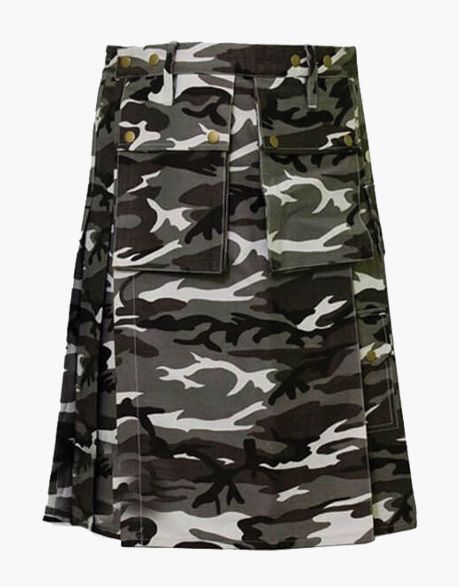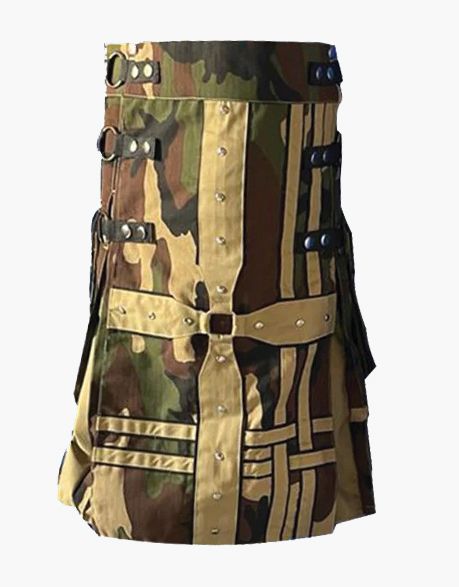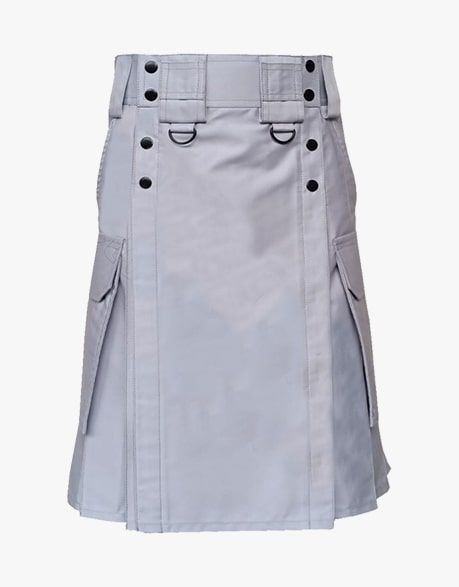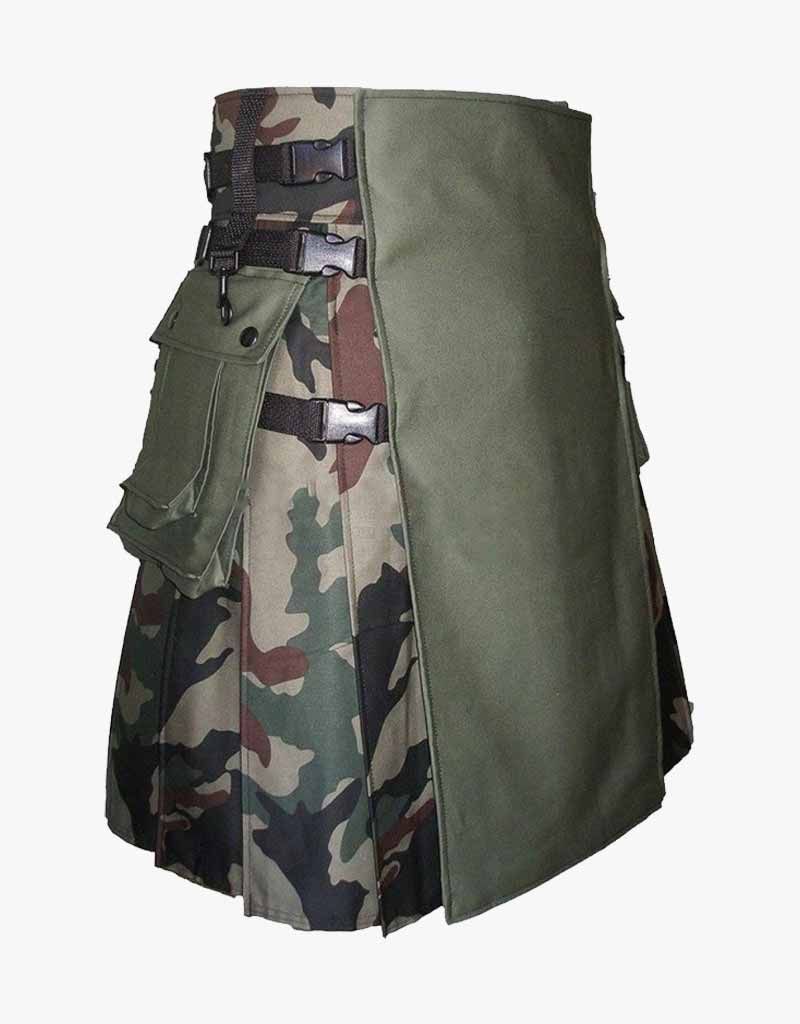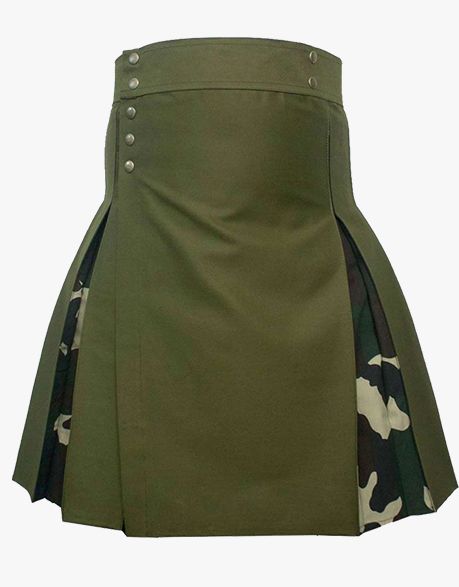Comparing Different Materials Used in Tactical Kilts
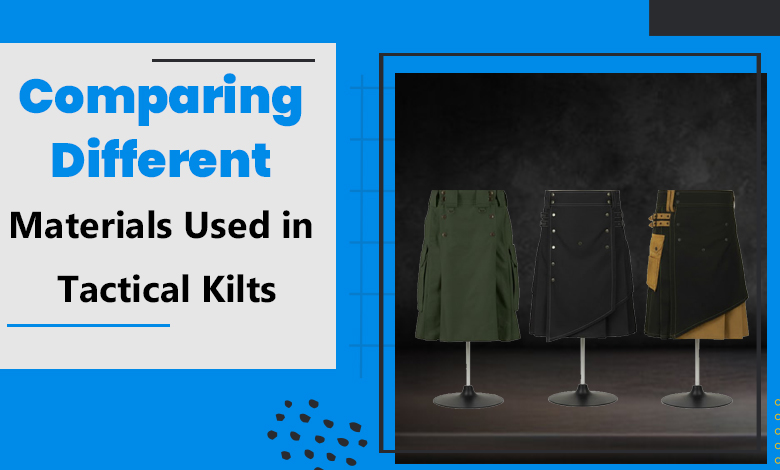
A kilt, itself, is a traditional Scottish apparel that is proudly worn in Scotland. A traditional kilt or a tartan kilt is usually made with wool, which represents the clan in Scotland and the region in Ireland. Over time, modern twists occurred and many other forms of Scottish clothing came into being, including tactical kilts. This variation is made with strong and lightweight fabrics because of its association with regimental services and outdoor ventures. Thus, this blog post revolves around the materials used in tactical kilts. Let’s initiate our discussion with understanding what a tactical kilt is.
Table of Contents
ToggleUnderstanding Tactical Kilts
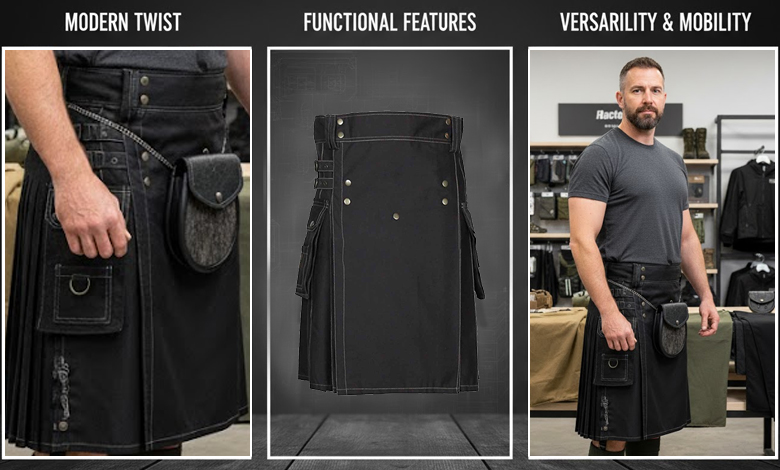
A tactical kilt is a modern appearance of traditional kilts. They, by default, have some additional features, including pockets, adjustable waistbands, and extra accessories, making them workwear kilts just like utility kilts.
Tactical kilts have many differences from traditional kilts, as they are lightweight and lower number of pleats, offering them with more breathability and versatility. Cotton is the traditional fabric to make it, but today many other materials also have appeared in the ground. Before we highlight these fabrics, let us overview the key performance factors in tactical kilt materials.
Common Materials Used in Tactical Kilts
Material’s role is important when we talk about clothing for military-inspired events or outdoor activities, such as hunting and hiking. Tactical kilts as tactical gear are composed of different fabrics. Cotton remains the first choice, while polyester, nylon, and blends of various fabrics also have become common options today.
Cotton
As we know that breathability, comfort, and durability are primary requirements of a kilt, and cotton is competent enough to fulfill these requirements. Cotton-made kilts ensure a flow of air nearby the legs to keep the body cool. Above all, it makes lighter fabrics, which are not challenging to maintain.
Polyester
Another choice is polyester, which is considered the alternative to nylon but has some differences. It is an artificial fabric, which usually suits people with a low budget to buy kilts. Instead of being economical, it functions the same compared to cotton kilts. Along with cost-effectiveness polyester tactical kilts have many other features, including quick drying, UV ray resistance (preventing color fade), and lower stretchability.
Ripstop Nylon
Nylon is the top choice for many to make tactical gear. It further has two variations: ripstop and candura nylon. Among these, ripstop is the priority to make kilts. It comes with tensile strength, making it withstand wear and tear. Being lightweight and durable are its features, but its ability to resist water to a specific degree declares it to be a handsome choice for tactical kilts.
Poly-Cotton Blends
A merger of polyester and cotton is called a poly-cotton blend, and it is also a nice choice to make tactical kilts. Combining the properties of two primary materials offers something exceptional to experience. This cocktail is widely used in casual events while positively affecting the durability and affordability of kilts.
Canvas
Canvas is a heavy-duty fabric that is used to make tactical kilts. It is a combination of strong cotton materials, or any synthetic component can also be involved in its formation. Kilts made with this particular material are extremely durable and provide a good level of breathability. People who want a flair of natural fabric in their attire, prioritize it. Moreover, canvas is known for being water-resistant after treatment.
Key Performance Factors in Tactical Kilt Materials
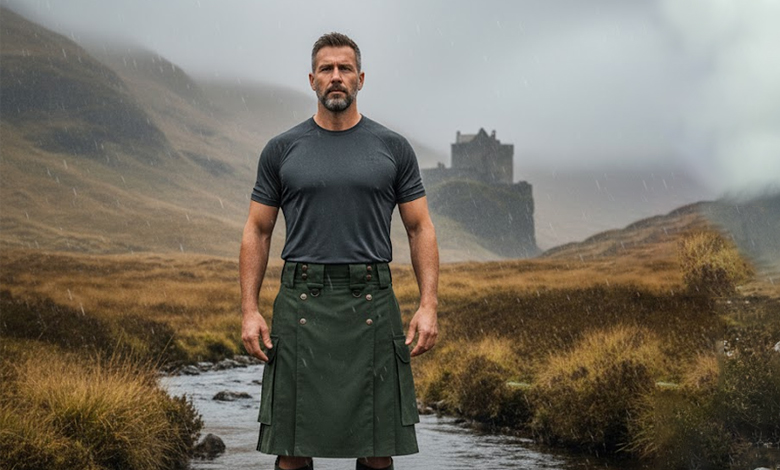
If we glimpse into the origin of overall kilts for men, Highlanders felt the need for an apparel that offers durability, comfort, and mobility in the rough terrain of the Highlands. So, the tartan kilts were invented as a result which usually lack practicality features. A tactical kilt, the modern form of traditional clothing today has numerous features along with comfort and durability.
Durability: The fabric of a tactical kilt must be durable so it may not bother as an all-day wear. In fact, durability is the first concern in the minds of kilt-makers. It is the reason, this variation is highly suitable for adventurous environments.
Comfort: Wearing an uncomfortable kilt resembles wearing leather pants as the comfort is its primary purpose. So, cotton and polyester are used in construction of these kilts and comfort is the shared feature of both fabrics.
Weather Resistance: The weather of Scotland remains unpredictable and rain is always at a distance of a few moments. So, water-resistance is the basic need of the people. Tactical kilts are made from durable fabric with tight threads that resists the water to a specific level. In fact, they have both capabilities: waterproofing and soundproofing.
Mobility & Flexibility: Like every other kilt variation, tactical kilts also have a pleated design, which helps in mobility and flexibility. Moreover, their pleats are lightweight, encouraging mobility and flexibility more effectively.
Maintenance: The final positive key performance factor making tactical kilts a high-demand fabric is their low maintenance. A merger of durable fabric and reinforced stitching (strong construction) makes them easy to maintain.
Durability Comparison Chart
| Material | Features |
| Cotton | Naturally durable and breathable, but can wear down faster with frequent heavy use. |
| Polyester | Strong synthetic fiber, resistant to shrinking and UV damage, less prone to fading. |
| Ripstop Nylon | Very high tensile strength, resists ripping/tearing, lightweight but built for rugged use. |
| Poly Cotton Blends | Combines strength of polyester with comfort of cotton, enhanced durability over pure cotton. |
| Canvas | Extremely durable and heavy-duty, especially when treated; resists abrasions and water. |
Specialized Finishes & Treatments
Undoubtedly, tactical kilts are popular for being durable and comfortable. If you do not find them fulfilling your requirements, you can propose special treatments to make them more effective. Here are a few steps that can be beneficial for your clothing.
DWR Coatings: Water has never been a good companion of fabric, so you should consider applying DWR (durable water repellent) spray to make your tactical kilt water-friendly. Before the application of DWR coating, clean the kilt as a priority.
Antimicrobial treatments: An antimicrobial treatment can also prolong your tactical kilt’s lifespan. This treatment prevents mold and mildew. Likewise, there are multiple ways to apply this treatment while the most convenient ones are coating, impregnation, and surface modifications.
UV Protection: Ultraviolet rays have a tendency to damage the both, fading color and weakening the fabric. You can protect the clothing by making sensible choices of light shades, as dark colors absorb the rays. Similarly, applying UV-protectant treatments also increases their lifespan.
How to Choose the Right Material Based on Use Case
The quality of material impacts the experience, every time you wear a kilt. The same fabric may not be suitable for all occasions. So, it is important to choose the right material depending on the wearing purposes.
Outdoor Adventure / Labor-Intensive Use: Every physical work demands for a strong fabric whether wearing it at an outdoor adventure or need something for labor-intensive use. Tactical kilts have good reputation in both and those made with heavy-duty cotton material, canvas, or those made with poly-cotton blends may be the ideal ones.
Everyday Casual Wear: Tactical kilts are also good performers as everyday casual wear because of their functionality and enhanced comfort factors. Make sure to wear the one that a lightweight cotton material makes.
Year-round Tactical Functionality: Among many other benefits, tactical kilts are also year-round clothing. Thus, the selection of the right fabric relies on the weather to wear or your needs. Lightweight fabric suits summer while winter requires something heavy to stay warm.
Environmental Impact & Sustainability
The impact of tactical kilts on the environment relies on the material that makes them. Cotton and canvas are biodegraded natural materials but their production requires a lot of water. On the other hand, some synthetic options are durable but are not eco-friendly options because their origin is petroleum-based.
That’s why most of the kilt-makers today choose recycled materials or sustainably sourced cotton, as they reduce the environmental footprint. Above all, blended fabrics develop a good connection between performance and sustainability and support durability.
Price vs. Performance Trade-Offs
Regarding the price vs. performance factors of tactical kilts, every material has its very price and its performance depends on the quality. If we talk about the most economical tactical material, the poly-viscose remains on the top providing comfort and durability altogether.
The pure cotton may not be the suitable option for longevity but their use in tactical kilts is acceptable for good insulation and comfort. In the same manner, kilts made with blends of different cotton forms or mergers of polyesters are exceptional with durability perspective but the prices may be significantly higher than others.
Buy Exceptional Tactical Kilts at The Utility Kilt
The material of a tactical kilt, unquestionably, decides its level of durability, comfort, and even the lifespan. That’s why buying premium-quality clothing becomes necessary. To purchase such kilts you must consider visiting The Utility Kilt, as it is a well-recognized brand for selling exceptional kilts with cost-effectiveness. Explore our online store to find the suitable kilt for you, and let us know if you need customization. Most importantly, our inventory is far above the kilts since we also sell kilt accessories, musical windpipes, and kilt jackets.
Our Best Selling Tactical Kilts
We have a wide variety of tactical kilts in sizes and designs. In case they do not meet your requirements or even the taste, let us know, we will customize it as per your requirements. Some of our best tactical kilts are given below that you must give a thought once.
FAQs About Tactical Kilts
What’s the difference between tactical kilt fabric and traditional kilt fabric?
Traditional and tactical kilts involve different fabrics in their construction. Traditional kilts are usually woolen or tartan-made and are warm and durable. Tactical kilts are primarily cotton-made and suitable for both weathers offering increased durability and breathability.
Can tactical kilts be worn year-round in varying climates?
Yes, tactical kilts are an ideal choice as year-round clothing in every climate, but the types of quality of material matter. In summer, pure cotton kilts with lightweight fabric perform well, while blends or polyester kilts made with heavy-duty fabric are suitable for the winter season.
Is color retention affected by material choice in tactical kilts?
Indeed, the material selection has an impact on tactical kilt color retention. The ability of various fabrics to hold onto dye and withstand fading or color change with washing, abrasion, and exposure to the environment. That’s why proper maintenance of tactical kilts with careful approaches is necessary.
Are tactical kilt materials prone to pilling or surface wear over time?
Yes, some fabrics made with lower quality, including polyester or nylon, are prone to pilling over time. While the natural fabrics are durable and do not cause pilling.
